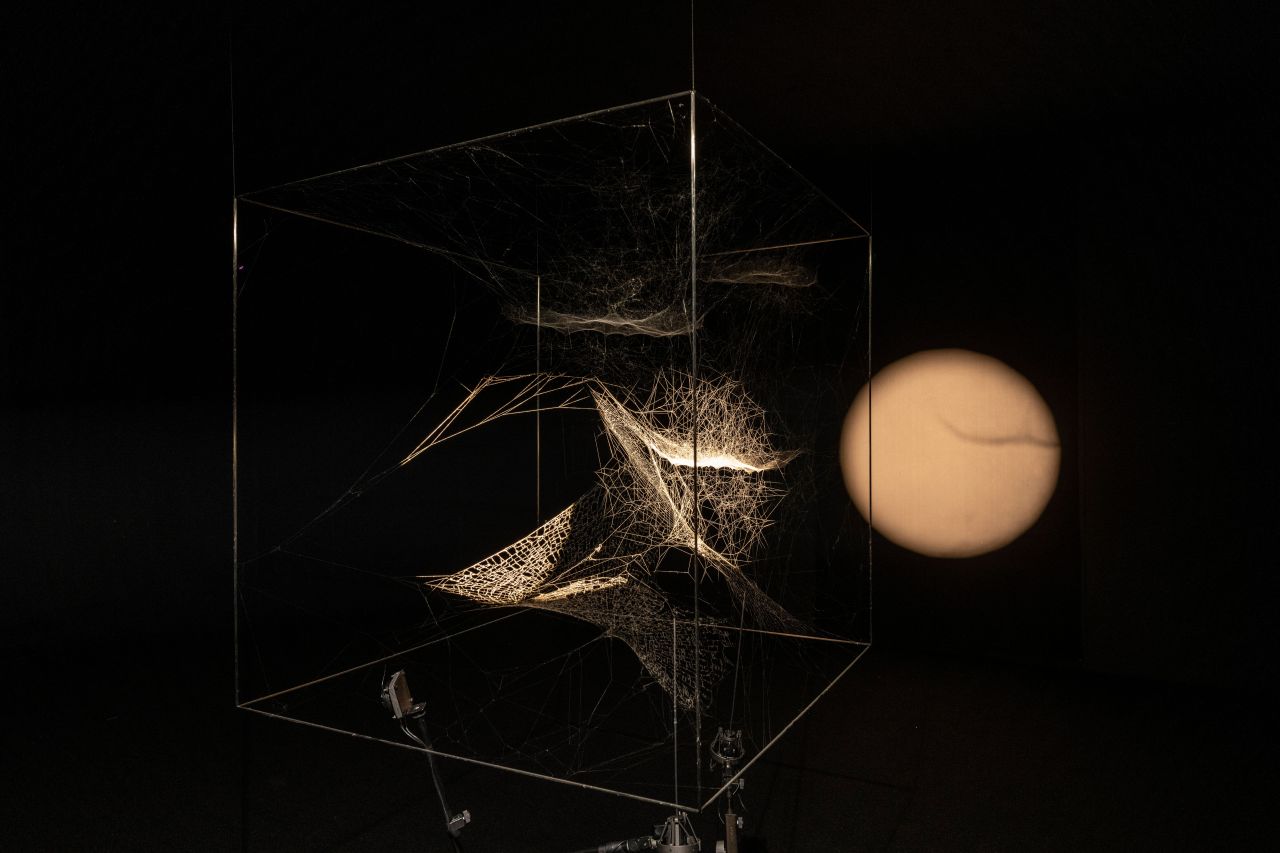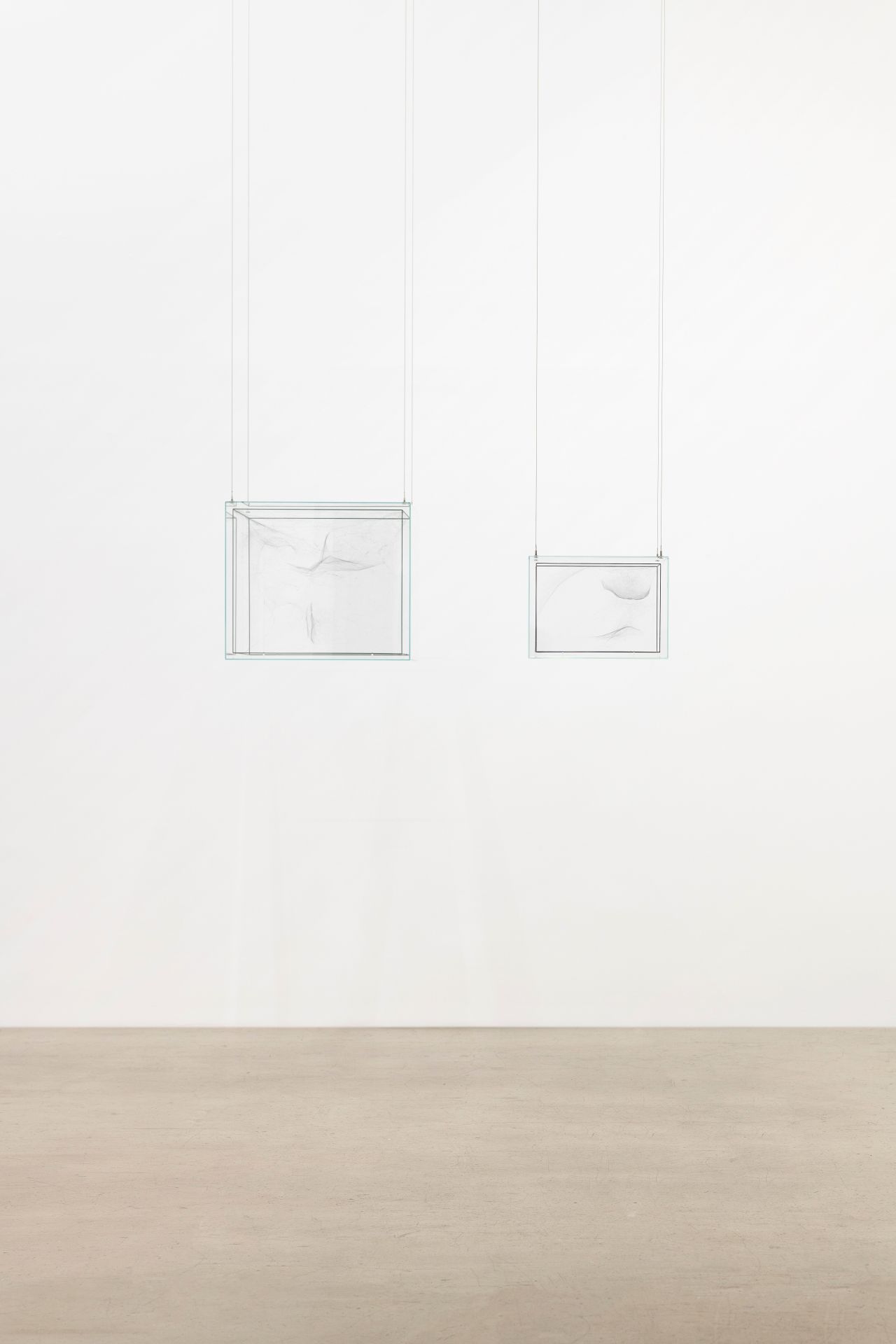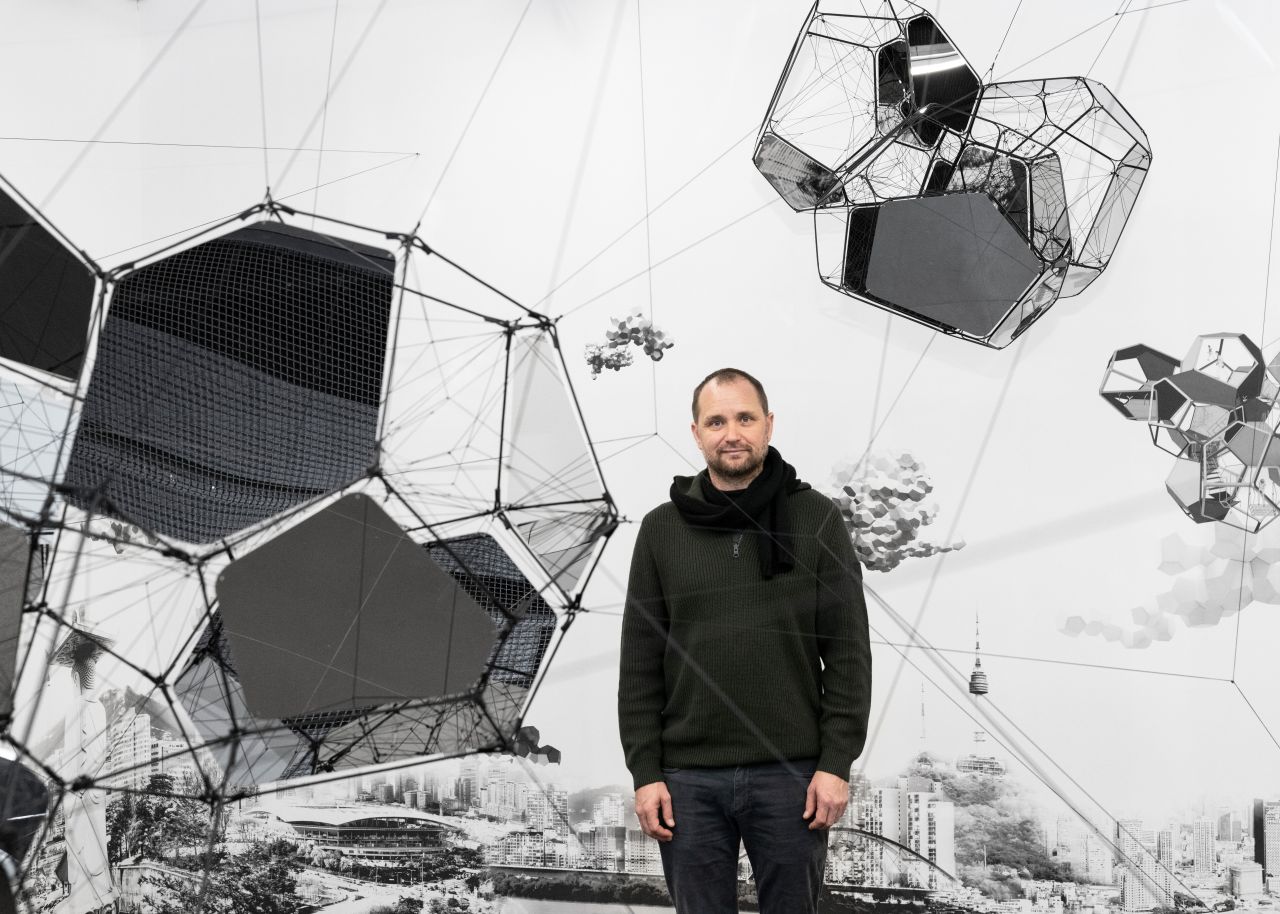Bolting out of his chair during a press conference at a restaurant next to Gallery Hyundai, artist Tomas Saraceno headed straight for a small maintenance closet where cleaning tools were kept. Saraceno opened the door, looked up at the corners and pointed at a spider web. “There is a work of art,” he said.

This rather eccentric Argentine artist based in Berlin was at Gallery Hyundai on Oct. 30 for his solo exhibition, which features a series that has gained attention not just within the art scene but in the science field as well.
Spider webs by Saraceno are regularly sought by universities and other institutions that study the properties of spider webs. Saraceno’s studio currently holds the largest three-dimensional web collection in the world.

The second floor of Gallery Hyundai offers a glimpse of Saraceno’s spider web collection, among them the “Hybrid” series, clear cubes that contain webs spun by spiders of different species.
A dark room titled “Arachno Concert: With Arachne (Nephila senegalensis), Cosmic Dust (Porus Chondrite) and the Breathing Ensemble” (2016) has at its center webs whose intricacies are highlighted by a bright beam of light that projects their shadows onto the wall.
A camera captures the movements of the dust particles that appear in the only beam of light in the room. When people move, the shadows of the dust particles projected on the wall appear faster and busier.
The movements of those dust particles are also translated into sounds, a bit like drops of water echoing inside a cave. The camera sends the changes in the particles’ movements to a computer, which turns the visual information into sound. The computer program also translates into sound the vibrations produced by the spider’s movements -- making an ensemble of particles, people and spider.
Saraceno said he wanted to bring these tiny architects from the corners where they usually live to center stage in the exhibition. Saraceno also gave full credit and authorship to the spiders, saying “they collaborate with me but not me with them.”
Like a spider, the artist fancies forming a network of people. In his Berlin studio, Saraceno works together with artists, philosophers, biologists and art historians to imagine solutions to emerging issues in contemporary societies.

Also on show at Gallery Hyundai are the artist’s works from science-art projects “Cloud Cities” and “Aerocene.”
“Seoul/Cloud Cities” (2019), shown in the basement, is a set of installations that use the Weaire-Phelan structure, a complex three-dimensional structure representing an idealized foam composed of equal-sized bubbles. Shown in the backdrop is an urban landscape of Seoul. The artist suggests “cloud cities” as an alternative model for housing and transportation systems.
Sculptural works that use silver and transparent mylar -- a type of polyester film -- reflect and scatter light on the wall, creating a cosmic view that recalls Saraceno’s exhibition “Solar Rhythms,” held at the Tanya Bonakdar Gallery last year.
Installations from “Aerocene,” a project by an interdisciplinary art community that seeks a less human-centric approach to understanding the world, occupies a central space. The project is devising new models of sustainable transportation that do not rely on fossil fuel.
Another work on the first floor is “Calder Upside Down 35/20/18/12/10/8/6,” Saraceno’s mobile work inspired by Calder’s famous hanging mobile. Saraceno was the recipient of the 2009 Calder Prize and participated in a residency program at Atelier Calder from February to July 2010.
By Shim Woo-hyun (ws@heraldcorp.com)








![[KH Explains] How should Korea adjust its trade defenses against Chinese EVs?](http://res.heraldm.com/phpwas/restmb_idxmake.php?idx=644&simg=/content/image/2024/04/15/20240415050562_0.jpg&u=20240415144419)











![[Today’s K-pop] Stray Kids to return soon: report](http://res.heraldm.com/phpwas/restmb_idxmake.php?idx=642&simg=/content/image/2024/04/16/20240416050713_0.jpg&u=)